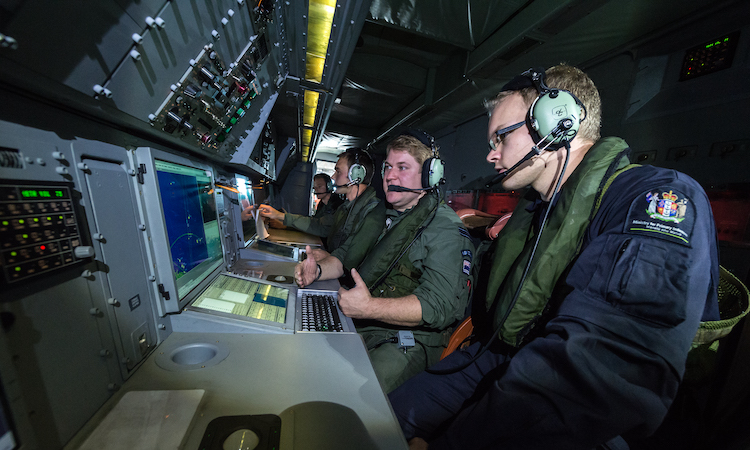The days of a separate frontline and back office are gone. In both peace and conflict, and the grey zone in between, the Defence Force exploits a digital eco-system to deliver domain mastery, and operational and organisational excellence objectives as part of its strategy.
Today’s world is undeniably digital. As the United Kingdom’s Ministry of Defence observes in its Digital Strategy for Defence, “digital is all-pervasive and is relentlessly changing the character of warfare and politics because data-driven capabilities change the way we communicate, live, and work. It is also changing the character of competition and conflict.”
Warfare is expanding from platforms to digital capabilities that support the delivery of integrated communication and information management across warfighting domains, single Services, government agencies, partners and allies, and even commercial collaborators. This new style of warfare relies on improved decision-making in a complex environment that involves huge amounts of data, computing, network and processing power, instantly accessed and secured so it can be relied upon and trusted.

Compared to even the recent past, commanders are receiving massive volumes of data that is arriving at literally the speed of light, to help them make important decisions both on and off the battlefield.
What ‘digital’ means for the NZDF
The NZDF’s strategy is centred on multi-domain integration, ensuring that every part of Defence and our partners, can work seamlessly together to deliver desired outcomes. Practically, it means that all operational activity is connected through communications, and data from all platforms (whether it be in land, sea, air, or cyberspace) is collected, analysed and available to decision makers and users.
Our strategy has three key lines of effort:
- operational mastery across three combat-ready domains and integrated information capabilities,
- operational excellence, and
- organisational excellence
The tangible expression of the NZDF being an integrated Defence Force will be our ability to generate, deploy, operate, sustain and regenerate as a data-centric, networked, combat force. Core to delivering this strategy is the application of digital technologies and the exploitation of the data they create or capture.
Digital is less of a thing and more a way of doing things. The Defence Digital Eco-system is an evolving collection of digital platforms and products, allowing our Force to connect and interact in ways that create value for participants. A digital eco-system (‘digital’) has three attributes: it creates value for the future, for our core business, and for the foundational capabilities that support the entire structure. These attributes align and add value to Defence’s current strategy of domain mastery, operational and organisational excellence.
Digital creates value for our future operations by examining new frontiers of domain mastery, so our warfighting domains are assured of operational advantage in changing types of conflict. Unlocking value from emerging digital capabilities will be critical to creating competitive advantage for our combat forces. We have a responsibility to maximise value from our current and future capabilities and investments, thereby earning the trust of the war fighter and New Zealanders.
Two examples of how the NZDF will be exploiting its digital ecosystem to ensure mastery is realised are the on-board analytical and Operations Centre’s processing capabilities that increase the speed and precision of decisions by our P8A Poseidon crews; and, the use of sensors, big data, metrics, and analytics that will improve the efficacy of our supply chain operations and deliver insights from future enterprise resource applications.

Creating value in our core business – operational excellence
Digital causes us to rethink how to use new capabilities to improve our core business: operational excellence. Decision-making speed is the warfighting currency of the digital age. As Australia’s Assistant Defence Minister said at the launch of the Data Division within the Department of Defence last year, “we know that information and data underpins all effective military operations and decision-making”.
Decisions are being made in more complex environments (the so-called grey zone) and require knowledge drawn from a greater volume and breadth of relevant streams of intelligence sources. Blending data from multiple trusted channels into a coherent and accurate narrative is critical to operational and strategic decision making. This now requires extensive automation, customisation, real time learning, improved resilience, and tools to anticipate reactions. We can use digital to shift our old ways of making decisions that try to make sense of siloed data, into real-time decisioning that uses evidence-based and analytical-based practices.
The final element of how digital delivers value to our strategy is the foundational technology and organisation processes that allow us to be agile and fast. Changing mindsets allows us to use data to make better and faster decisions, devolving decision making to smaller teams, and developing much more iterative and rapid ways of doing things.
The NZDF’s Defence Digital Group (DDG) – the new name for Communications and Information Systems Branch – calls this Mission Command for Information Technology (MCfIT). DDG practices mission command by devolving decision making to smaller teams, and developing more iterative and rapid ways of doing things. We are institutionalising cross-functional collaboration, flattening hierarchies, and building an environment that encourages automation and process optimisation to release and iterate quickly. In short, creating a digital workforce.
But it is not enough for only the IT department to be agile; the whole Defence Force needs this mindset to accelerate the connections between sensors and deciders. As Adobe considers in their Digital Trends 2022 paper, “senior executives should liberate their team members from routine and mundane tasks by capitalising on existing intelligent automation and by investing in the most valuable skills…”. Properly applied, a digital mindset does that.
The need for speed
Paraphrasing Amazon’s Jeff Bezos, in today’s volatile world speed and agility are major competitive differentiators – everything else you create can be replicated by our adversaries. Speed and agility are essential and attainable attributes for a small nation’s Defence Force to perfect. Digital permits highly integrated operational environments to be created and refreshed at pace and scale – including alongside like-minded partners. This approach reduces technology debt and security vulnerabilities, and increases interoperability where it matters.
The NZDF is focussing on the changes we need to make to ensure our strategic goals are enabled by a digital backbone that operates at speed, and is secure, sustainable, scalable, and simple. A secure, singular, modern, digital foundation will connect combat power with decision-makers across military and business domains and with partners, driving integration and interoperability across domains and platforms.
Digital sits at the heart of our investment options. In an era of persistent competition, Defence must adopt an approach that places the latest technologies in the hands of our operational and business users, while also ensuring that our people, processes and data keep pace with best practice. We are leveraging commercial partners such as Microsoft and Vodafone to deliver commodity information technology, and using the sector’s expertise to help us with the four critical digital capabilities – technology, people, process, and data – to accelerate the military’s ability to respond to changing threats.
Alongside traditional military platforms, future investments that will contribute to a digital eco-system include investments in information management, intelligence processes and systems, cybersecurity, and enterprise resource planning.
The NZDF is transforming its decision making capabilities where it’s digital foundation provides the Force with the freedom to consume and exploit data. Our Defence digital eco-system will create value and advance NZDF’s strategy in three areas: domain mastery (ensuring operational advantage), our core business (improved decision-making), and our fundamental capabilities (a changed mindset). We will know we have succeeded when integration is embedded by design across a data-centric Defence Force.






